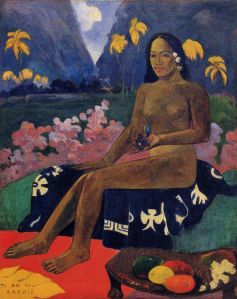“Embrace a Spirit of Collective Meaning Making” – Lessons Learned #2
The number one lesson learned this week in MOMA’S Art and Inquiry MOOC was the importance of individual and shared perspective.
From an individual perspective, I was able to see how my viewing of an object was influenced by my own experiences and cultural literacy. This idea is discussed in detail in Enabling Individual Engagement with Works of Art, identifying the knowledge and skills that enable engagement, including aesthetic perception, artistic creation, and historical and cultural context. As teachers, we must take into consideration that each student will bring their own set of experience and literacy to our classroom and it is our job to ensure that their voice is heard. See more here Encouraging Student Voice with Inquiry Based Learning.
From a shared perspective, my personal learning network is providing me with additional insights and learning experiences that I would not have uncovered on my own, including Sandra Sinfeld’s insightful and resource-laden Last Refuge Blog and a link to James Elkins (Department of Art History, Theory, and Criticism School of the Art Institute of Chicago) online eBooks.
Then, there is Ary Ananguiz’s All the World’s a MOOC Blog where she challenges the reader “Why Look at Art,” If ever we are affected by “Ozymandias Melancholia” and think of the futility of life, art exists to remind us of the power of our desire to express ourselves and to leave an indelible mark.
Honoraria Starbuck realized that we really could find a way to utilize the chaos of the Discussion Forums to undercover resources by using the search function to yield a variety of resources from the plethora of resources shared among the discussions–For one search I entered www. into the search window, this yielded 439 results (or 22 downloadable pdf pages chock full of potential web resources, to explore at a later time).
Kelcy Allwein uncovered Free online Museum Catalogs from the Metropolitan Museum of Art and the Guggenheim Museum, as well as the notion that by searching for a specific artwork, similar threads could be found. I decided to check out all four before submitting mine in case I should just append my input to one of them. However, I found that each one took a different approach from mine. So I decided to create a new thread.
I was drawn to this work of art because I recently relocated to Maui and found this painting set in Tahiti to be evocative of the Hawaiian Islands. In fact, in Michener’s Hawaii, he contends that the first Hawaiians were from Bora Bora and Tahiti. The volcanic mountains in the background resemble the West Maui Mountains. Most recently, my 14 year old granddaughter has undertaken Tahitian dancing, so I have become immersed in the culture. (You can see a part of her recital here)
There are different resources to find more information about the painting, including: MOMA’s Online Collection, The Google Art Project (details), and an Art Appreciation Blog (Bobbi Joseph) among others.
I also used the suggestion to view other posts in the forums about Gaugin to further expand my knowledge and insights.
In summary, The Seed of Areoi was painted after Gauguin had been in Tahiti for about a year. He wasn’t painting what he saw in Tahiti, he was painting what imagined it would be, a “pre-modern land of leisure.” “By the time of Gauguin’s arrival Tahiti had been profoundly altered by French colonization: poverty and sickness were rampant” “His use of bright, flat, and unrealistic colors and his interest in recovering a “pure” subject, closer to nature. “The Areoi was a secret religious order, with a hierarchical structure and cultural functions.
“Tahiti had been profoundly altered by colonialism (the Areoi society itself had disappeared), but Gauguin’s vision of the place gave him an ideal model for his painting. This vision was particularly powerful for him in its contrast with the West, which, he believed, had fallen into “a state of decay.”
4 comments on ““Embrace a Spirit of Collective Meaning Making” – Lessons Learned #2”
Leave a comment
How creating works by hand opens the mind, establishes a sense of self and brings peace.
Doug Belshaw's blog
Amy's Whimsical Musings



Mahalo for the shout out and for the wonderful links! I love your idea of using this painting to introduce students to culture and history!
It’s great MOOCing with you and Sandra again. I am getting my blogging tuned up for Creativity, Innovation, and Change that starts in September. Your positive comments encourage me to write more.
Beautifully constructed blog overall Cathleen – love the way you have set out the whole thing – really elegant and inviting. Great post and, as with Ary, thanks for the shout out!
Thanks for the positive comments, Sandra. I am a technical writer, so blogging doesn’t come easy to me. It helps to have feedback.